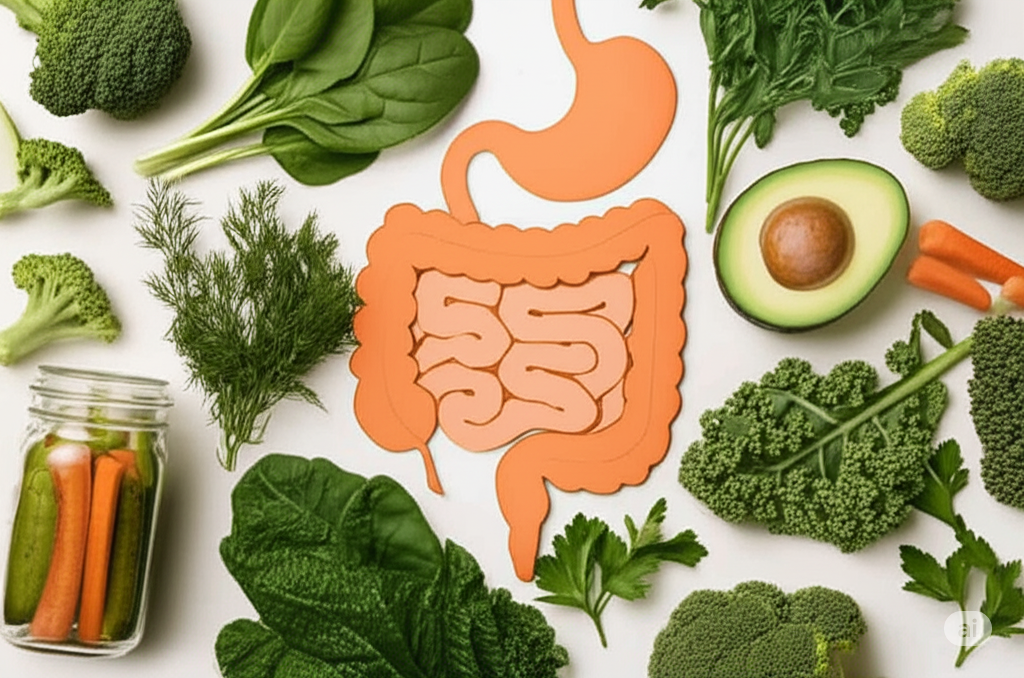Ayurveda, the ancient Indian science of life and health, offers a deeply personalised and holistic approach to nutrition. Unlike modern nutritional systems that primarily focus on calories, macronutrients, or food groups, Ayurvedic nutrition views food as medicine, capable of healing the body, balancing the mind, and promoting spiritual well-being. It emphasises not just what you eat, but how, when, and why you eat — aligning nourishment with nature’s rhythms and the individual’s unique constitution (Prakriti).
Core Principles of Ayurvedic Nutrition
1. Food as Energy (Prana)
In Ayurveda, food is not merely a source of nutrients but a carrier of Prana — the vital life force. Fresh, seasonal, and locally grown foods are considered high in prana, while stale, processed, or frozen foods are seen as depleted in vitality.
2. The Role of Agni (Digestive Fire)
Agni refers to the digestive fire responsible for transformation of food into nutrients and waste. Strong agni ensures efficient digestion, absorption, and assimilation. Weak or imbalanced agni leads to Ama (toxins), which is the root cause of most diseases.
Types of Agni:
-
Sama Agni – Balanced digestion
-
Vishama Agni – Irregular digestion (Vata-dominant)
-
Tikshna Agni – Intense digestion (Pitta-dominant)
-
Manda Agni – Sluggish digestion (Kapha-dominant)
The Tridosha Framework and Personalised Nutrition
Each person has a unique constitution (Prakriti) based on the balance of the three doshas: Vata, Pitta, and Kapha. Ayurvedic nutrition recommends foods that balance your dominant dosha(s) and current imbalances (Vikriti).
✴️ Vata (Air + Ether)
-
Qualities: Cold, dry, light, irregular
-
Favoured foods: Warm, moist, grounding, oily, sweet, sour, salty
-
Avoid: Raw, cold, dry, bitter, astringent
🔥 Pitta (Fire + Water)
-
Qualities: Hot, sharp, oily, intense
-
Favoured foods: Cool, mild, sweet, bitter, astringent
-
Avoid: Spicy, sour, salty, fermented, alcohol
🌿 Kapha (Earth + Water)
-
Qualities: Heavy, cold, slow, oily, stable
-
Favoured foods: Light, dry, warm, pungent, bitter, astringent
-
Avoid: Dairy, oily, sweet, cold, heavy meals
Six Tastes (Shad Rasa) and Their Therapeutic Roles
Ayurveda classifies food based on six tastes, each with unique effects on doshas, digestion, and mental-emotional state:
| Taste | Sanskrit | Elements | Effect on Doshas |
|---|---|---|---|
| Sweet | Madhura | Earth + Water | ↑ Kapha, ↓ Vata & Pitta |
| Sour | Amla | Earth + Fire | ↑ Pitta & Kapha, ↓ Vata |
| Salty | Lavana | Water + Fire | ↑ Pitta & Kapha, ↓ Vata |
| Pungent | Katu | Fire + Air | ↑ Vata & Pitta, ↓ Kapha |
| Bitter | Tikta | Air + Ether | ↑ Vata, ↓ Pitta & Kapha |
| Astringent | Kashaya | Air + Earth | ↑ Vata, ↓ Pitta & Kapha |
A balanced diet includes all six tastes, but in proportions that suit the individual’s constitution and season.
Guidelines for Ayurvedic Eating Habits
-
Eat According to Agni
-
Main meal should be at midday when Agni is strongest.
-
Avoid heavy meals late at night.
-
-
Eat with Mindfulness
-
Avoid distractions like phones or TV.
-
Eat slowly and chew thoroughly.
-
-
Avoid Incompatible Food Combinations (Viruddha Ahara)
Some combinations produce Ama and disrupt digestion, e.g.:-
Milk + Fish
-
Fruit + Yogurt
-
Melons + Grains
-
-
Seasonal and Local Eating (Ritucharya)
-
Adjust diet with the seasons: light and raw in summer, warm and moist in winter.
-
Prefer locally grown and freshly prepared food.
-
-
Meal Timings and Routine
-
Eat only when hungry.
-
Avoid overeating or under-eating.
-
Maintain consistent meal timings.
-
-
Use of Spices
Ayurvedic cooking uses spices not just for flavour but for their medicinal properties:-
Ginger – Boosts Agni, reduces Vata
-
Turmeric – Anti-inflammatory, detoxifying
-
Cumin, Coriander, Fennel – Balances digestion, reduces bloating
-
Therapeutic Nutrition in Ayurveda
Ayurveda uses diet as a central tool for healing chronic conditions. Common therapeutic diets include:
-
Langhana – Lightening diet for Kapha disorders or Ama accumulation
-
Brimhana – Nourishing diet for emaciation, Vata disorders
-
Pachana – Digestive activation for poor metabolism
-
Shamana – Palliative diet to balance doshas gently
-
Shodhana – Detoxifying diet before Panchakarma (cleansing therapies)
Spiritual Aspect of Eating
Ayurveda considers food sacred. The act of cooking and eating is seen as a ritual that connects the individual with nature and the divine. Gratitude, prayer before meals (Annam Brahma), and eating with joy are encouraged.
Modern Relevance of Ayurvedic Nutrition
In today’s fast-paced world of processed foods, stress, and digestive disorders, Ayurvedic nutrition offers timeless wisdom:
-
Customised diets based on individual needs
-
Emphasis on gut health and digestion
-
Sustainable and seasonal food choices
-
Integration of food and lifestyle, not isolation
Conclusion
Nutrition in Ayurveda is more than a set of dietary rules—it’s a way of living in harmony with your body, mind, and environment. By understanding your unique constitution, honouring your digestive fire, and choosing food with awareness and gratitude, you can unlock the potential for deep healing, vitality, and longevity.



